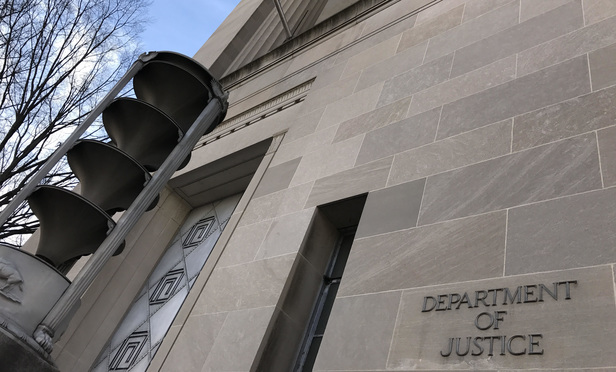Debevoise & Plimpton’s David O’Neil agreed that the Criminal Division’s loss of lawyers will hurt, but not cripple, the department.
“Every prosecutor counts, and any reduction will have some effect,” said O’Neil, a litigation partner and member of the firm’s white-collar and regulatory defense group. He served eight years in the DOJ, including leading the Criminal Division in 2014.
“But I think it is worth remembering that presidential budgets are really policy documents that don’t often go into effect as written. It is unclear whether this will actually mean a reduction in the Criminal Division,” he added.
“Besides,” O’Neil added, citing recent DOJ pronouncements, “I think the department has made clear that is going to prosecute white-collar crime with the same vigor that it has in the past.”
The DOJ’s budget actually included some increases for U.S. Attorney General Jeff Sessions’ priorities of fighting illegal immigration and violent crimes, despite the fact that violent crimes figures are near a historic low.
The budget increases include: $403 million more for agency operations, such as the FBI and the U.S. Drug Enforcement Administration; $79 million more for immigration review and new immigration judges; and $61 million more for U.S. attorneys, including 300 new assistant U.S. attorneys to help prosecute violent crime and protect borders from illegal immigration.
The department also requested an increase of $24.9 million for the U.S. Department of Health & Human Services to support criminal and civil health care fraud enforcement efforts, among others.
By comparison, larger reductions were proposed for the DOJ’s Civil Division. Its budget request remains at the 2017 level of $292 million, but includes a decrease of 185 positions, including 120 attorneys. That leaves 833 lawyers in the Civil Division to defend the government’s agencies and laws.
But those cuts are minor compared to the president’s budget reduction requests for other departments. For example, Trump has proposed slashing the U.S. State Department budget by about 33 percent, the U.S. Environmental Protection Agency by 31 percent and the Agriculture and Labor Departments each by 21 percent.
Copyright The National Law Journal. All rights reserved. This material may not be published, broadcast, rewritten, or redistributed.



